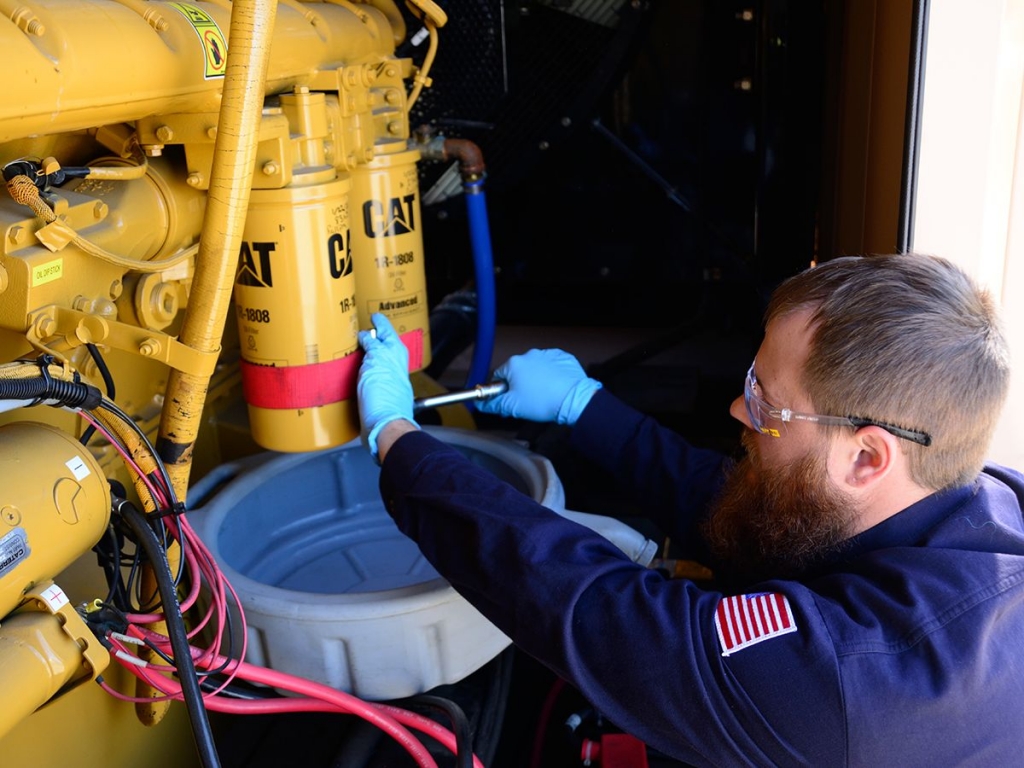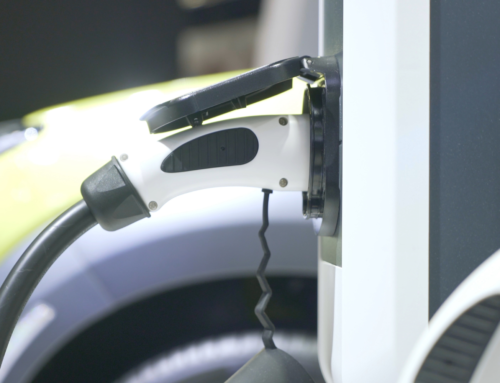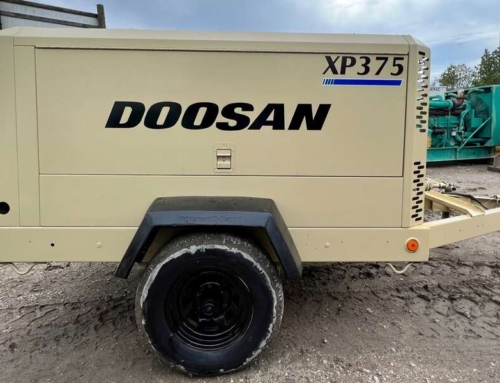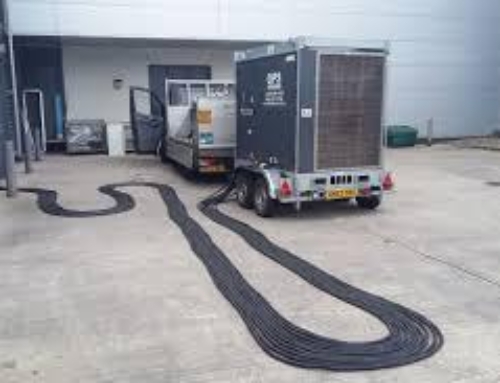Whether an emergency brought on by a severe weather outage or the need to have power on a job site running on a tight schedule, having your portable generator konk out on you costs you money.
Generator problems happen for a variety of reasons, and many can be allayed by doing proper maintenance. However, even if you take care of it properly, there are times when you’ll find yourself throwing your hands in the air and calling “Why is my portable generator not starting?”
We’ve put together a quick guide for you to cover several common issues with a portable generator that you can run through the next time there’s an issue.

Table of Contents
Focus on Fuel
Gas or diesel is the lifeblood of your generator, making it a prime source of trouble and one of the first things you should check on. It’s more than just making sure there’s enough fuel, though.
If your generator won’t start, there are several fuel things to check, starting with the indicator. You could get a false level and the tank is actually empty. Make sure you check visually that there is fuel and enough to crank the generator.
Next, check the fuel line for any leaks, cracks, or clogs. If you find any, you’ll likely need to replace the line as it’s rare to be able to repair it. You might even keep a spare line on hand just in case, although it’s not a common problem.
The fuel filter should be looked at as well to make sure it isn’t clogged. Clean it if you can or replace it if it’s become worn. This can cause the generator to not start or run rough.
Examine the fuel cap if the issue is that the generator won’t keep running. If it’s clogged, it’ll keep air from getting in, which will eventually keep fuel from flowing to the carburetor. Loosen the cap while the generator is running, and if it keeps going, you’ve confirmed a clog and the need to replace it.
Old fuel can also keep the engine from starting up, whether from evaporation or separation. Properly stored fuel only lasts about six months, while adding a stabilizer can give you up to three years of life. Adding some fresh fuel should help if this is the issue.
Check the Carburetor
The carburetor is where the air and gas come together so anything that keeps that from happening can be a source of an issue here. A clogged carburetor is a common villain if the generator won’t start, won’t keep running, or runs rough.
If you’re leaving fuel in the engine, some of the ingredients can evaporate, leaving behind a sticky substance that gums up the works. Cleaning the carburetor with a spray cleaner should be your first step here. If that doesn’t work, you might have to rebuild or replace the unit.
Scan the Spark Plugs
Not starting and running rough could be a sign there’s an issue with the spark plugs. Give them a good going over to look for signs of wear and tear, carbon build-up, or cracking.
A spark plug tester will show you if the plug is defective or if it can still be used. That will let you eliminate it as the issue and move on to other items on your troubleshooting portable generator checklist.
Air Filter Action
As a side check to the fuel filter and carburetor, take a look at the air filter to make sure needed air can get in to burn the fuel. Clean the filter if you can or replace it if it’s worn. This is a relatively inexpensive part that might be worth keeping on hand for this reason.
Battery Blues
Any issues with the battery could keep the generator from starting or cause your battery to die frequently.
The battery could be the cause of the portable generator not working if there’s accumulated corrosion on the plates. Check all the connections and clean them to make sure that’s not an issue. If the battery’s more than three years old or you’ve left the generator unused for a while, you might just need to replace it.
If you find your battery often runs out of charge, two things should be checked. The first is the voltage regulator, which should send power from the alternator to the battery to keep it charged. If it has become defective, the battery will drain quickly.
There’s also a chance the alternator has gone bad. You can use a multimeter to check it for continuity and rule it out as an issue.
Inspect the Ignition Coil
Another potential reason for the generator not starting is a defective ignition coil. The coil makes sure voltage gets to the spark plug to start the engine.
Check the spark plugs first to make sure they aren’t the issue. Once you clear them, test the coil to confirm it’s defective before you replace it.
Survey the Switches
Problems with different switches could cause your generator to not start up. If they don’t make contact, they can’t tell the generator to stop or go.
Check the start switch and the safety switch with a multimeter to ensure they’re not defective and are communicating correctly when you flip them.
Did You Solve Your Generator Problems?
Your portable generator is something you want to be able to rely on when the power goes out or you’re away from a power source. It’s frustrating to go to turn it on and things aren’t working well. Working through the various generator problems we’ve outlined here should get you up and running again.
If you find repairing a portable generator is too common an occurrence, maybe it’s time to look at replacing it. Check our inventory online or contact us to talk about what kind of portable generator you might need.
Frequently Asked Questions About Generator Problems
1.How can I determine whether my portable generator requires repair?
There are a few indications that your portable generator needs maintenance if it isn’t performing well or not at all:
- It struggles to start or won’t start at all
- It abruptly turns off or stalls while running
- When checking the oil level manually (without using an oil dipstick), it is either too low or too high
2. What is a transfer switch that is “automatic”?
Using an automated transfer switch (ATS), you may securely join your generator to your home’s electrical supply. An ATS lets you power important equipment and keep it functioning through a power loss when installed and operated appropriately.
3.How much oil will I require?
Depending on the type and model, your generator may need a certain amount of oil. These details can be found on the generator or in the owner’s manual. To calculate how much oil your generator needs if you don’t have access to these materials, utilize our tutorial.
4.What is the average weight of a portable generator?
The weight of a portable generator can range from 10 to 100 pounds; the bigger models can generate more electricity. Look for anything less than 50 pounds if you want something simple to move.
5.Why does my portable generator stop working after a short period of use?
The most likely reason for this is overheating. This can be fixed by giving your generator 10 to 15 minutes to cool down before running it once again. You could also take action, like attaching an airflow damper to your exhaust pipe.
6.Is it possible to utilize a portable generator when there is no power?
Yes. During a power outage, portable generators can provide backup power. For example, you can use camping or tailgating as a part of your emergency preparedness strategy.
Regular maintenance on your portable generator is the best method to ensure it will be ready when needed.
7.What should I do if my portable generator isn’t producing enough power?
Ensure you have adequate fuel in your tank by checking your fuel source (gasoline or propane). Try replacing your spark plug with a new one if this doesn’t work. If the problem persists, you might require a new carburettor or possibly an entirely new engine.
8. What are the common most problems that generators face?
Today’s generators are manufactured keeping the highest industry standards in mind. However, they are still machines and can still face issues, hampering their performance. Some of the main issues that generators usually face include fuel, coolant or oil leak, low coolant, generator failure, fuel leaking into the tank, dead battery, control malfunction, and block heater wear.
9. How can I troubleshoot a generator?
Most of the issues that generators face can be resolved by following these steps. Check if anything is wrong with the fuel, check the carburettor, scan the spark plugs, clean the air filter, recharge the battery, inspect the ignition coil, and check all the switches. If the generator starts, it is good to go. If it doesn’t, you must take it to an expert.
10. How to know that it is time to buy another generator?
Generators are an important source of alternate power and they must perform in most conditions. However, if your generator is giving you trouble too often, you must look at replacing it. So, if you are looking for buying another generator, Swift Equipment can help you get the one that perfectly fits your requirements.







Leave A Comment